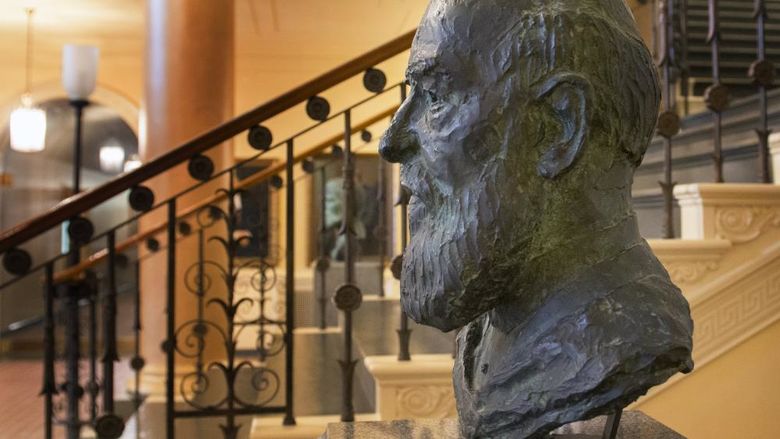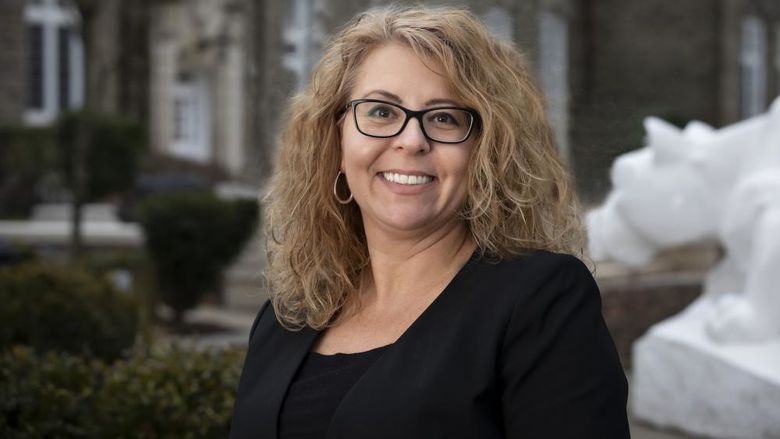
UNIVERSITY PARK, Pa. — The United Nations Economic Commission for Europe (UNECE), which includes the United States, prefaced its 69th session with a special virtual panel on high-performance buildings at 10 a.m. ET on April 19. The event was livestreamed on UN Web TV and featured Justin Schwartz, Harold and Inge Marcus Dean in the College of Engineering at Penn State, as one of the panelists. The recording is now available here (Schwartz’s remarks begin at the 2:52 mark).
The panel, comprised of experts from the UNECE’s research and education consortium and from the network of international centers of excellence on high-performance buildings, discussed how their activities relate to one another and others across the world to deploy the UNECE’s Framework Guidelines for Energy Efficiency Standards in Buildings — a holistic, systems approach to building design, delivery and operation.
“A building does not stand alone — it is part of a complex ecosystem that interacts with the environment around it and can deeply affect the people who occupy it,” Schwartz said. “The current built environment consumes more than 70% of the world’s generated electric power and is responsible for 40% of the world’s carbon emissions. By assessing and improving current buildings and developing better building approaches, we can create high-performance buildings that not only reduce consumption and waste, but also work to improve human health.”
In 2018, the UNECE and Penn State launched the Global Building Network (GBN), an initiative established and headquartered at Penn State, to coordinate the research, communication, dissemination and education necessary to advance energy efficiency standards in buildings worldwide. Led by Esther Obonyo, an associate professor in the School of Engineering Design, Technology, and Professional Programs (SEDTAPP) and in the Department of Architectural Engineering (AE), the network has nine university partners in the United States, Europe, Africa and Australia, as well as industry and government collaborators. At Penn State, the network is supported by SEDTAPP, AE, the Institutes of Energy and the Environment, Materials Research Institute, the Office of Global Programs, the Bernard M. Gordon Learning Factory, the Department of Architecture, Open Publishing in the University Libraries, the Office of the Physical Plant, the Sustainability Institute, the Pennsylvania Housing Research Center and Penn State New Kensington. The network is also supported by Penn State’s Law, Policy and Engineering initiative, which is an interdisciplinary academic and research effort among Penn State Law at University Park, the School of International Affairs and the College of Engineering. The goals of the initiative are to develop innovative degrees, certificates and courses, and to promote strong research opportunities that facilitate peer-reviewed, publicly disseminated scholarly work to influence decision making at the crossroads of law, policy and engineering.
Penn State offers several degree and certificate programs that help facilitate GBN’s educational goals, and AE in particular serves as well-respected research hub that fosters global connections to implement local solutions, Schwartz said. AE also partners with the World Bank to fund graduate students from eligible countries who specifically want to take the skills they learn at Penn State and implement them in their home countries.
“The Global Building Network is the critical keystone of creating sustainable, equitable built environments across the globe,” Schwartz said. “Bolstered by the strong academic programs at Penn State, the network connects stakeholders to bring global perspectives and experiences to help solve local challenges.”
GBN is one of three pillars of the UNECE’s High-Performance Building Initiative. Another pillar involves international centers of excellence to provide community-centric education and assistance to those who update and develop new buildings. The third pillar focuses on case studies of how the framework guidelines have been applied in different climates, stages of development and various infrastructures.
“A building developed for sustainable living in Vermont will likely not perform as intended in Morocco,” Schwartz said. “However, an engineer from Morocco and trained in high-performance buildings will not only learn new skills to implement in their home country, but they will also bring a different perspective that could spark creative innovation for a classmate, and vice versa. This is the type of exchange and collaboration the Global Building Network facilitates, in partnership with the international centers of excellence, to build the case studies that demonstrate how crucial and valuable high-performance buildings are for our future.”
The panel opened with a statement from Darragh O’Brien, minister for housing, local government and heritage in Ireland, and was moderated by David Chikvaidze, chef de cabinet for the United Nations Office at Geneva in Switzerland. Other panelists included Vivian Loftness, university professor and former head of the School of Architecture at Carnegie Mellon University; Werner Loscheider, head of unit for the Federal Ministry for Economic Affairs and Energy in Germany; Vahram Jalalyan, co-chair of the UNECE Joint Task Force on Energy Efficiency in Buildings and project manager for the Climate Change Programme for the United Nations Development Programme in Armenia; Jenna Cramer, executive director of the Green Building Alliance in Pittsburgh; and Scott Foster, director of the UNECE Sustainable Energy Division.




